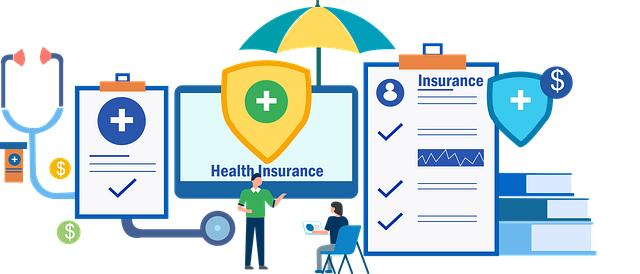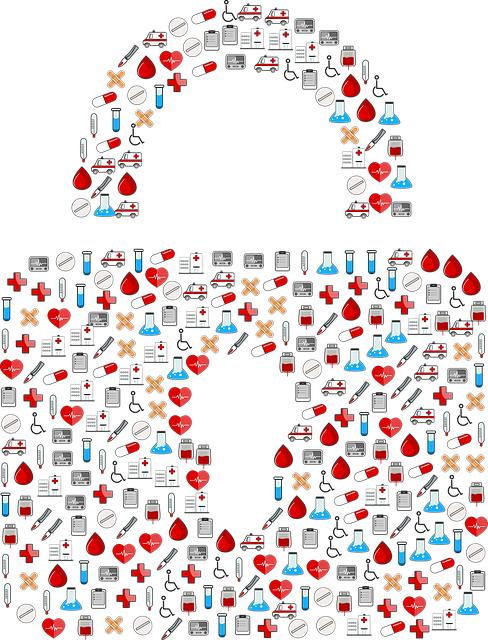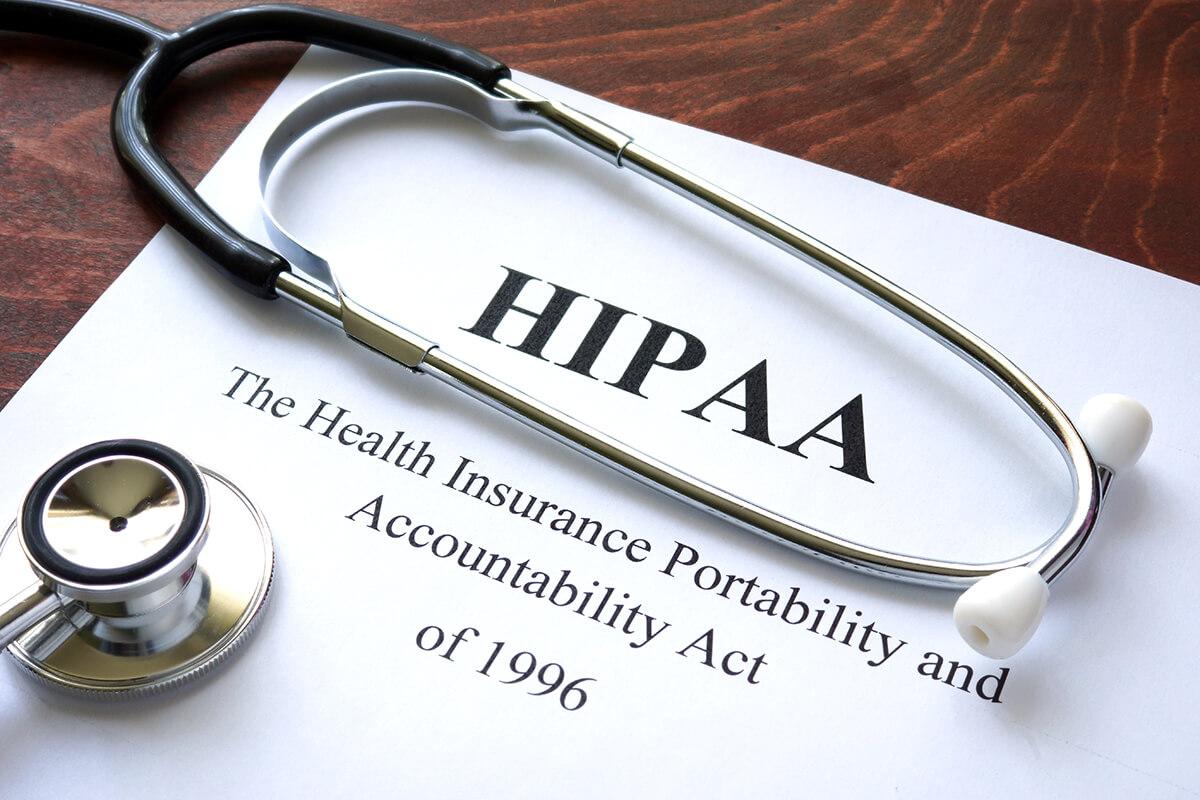Table of Contents
- Understanding the Foundations of the Health Insurance Portability and Accountability Act
- Key Provisions and Their Impact on Patient Privacy
- Navigating Health Insurance Portability: Rights and Responsibilities
- Best Practices for Compliance with HIPAA Regulations
- The Future of HIPAA: Emerging Trends and Recommendations for Stakeholders
- Q&A
- To Wrap It Up


Understanding the Foundations of the Health Insurance Portability and Accountability Act
The Health Insurance Portability and Accountability Act (HIPAA) was enacted in 1996 to address two fundamental issues: the portability of health insurance and the security of health information. The law facilitates the transition of health coverage for individuals when they change jobs, ensuring that their medical conditions and benefits do not get compromised. This aspect of HIPAA is particularly important for individuals with pre-existing health conditions, offering them the assurance that they will maintain their coverage regardless of employment transitions.
Another critical foundation of HIPAA lies in its provisions to protect sensitive patient information. Under HIPAA, healthcare providers and institutions are mandated to implement strict privacy measures to safeguard electronic records and personal health data. Key components include:
- Privacy Rule: Establishes standards for the protection of health information.
- Security Rule: Sets guidelines for securing electronic health information.
- Transactions and Code Sets Rule: Regulates the electronic exchange of health information.
- Identifiers Rule: Assigns unique identifiers for health care providers, health plans, and employers.
The impact of HIPAA extends beyond just regulations; it has reshaped how healthcare organizations manage data. Compliance with HIPAA is not merely about following the law; it fosters trust between patients and providers. In fact, a survey indicated that 75% of patients feel more secure sharing their health information knowing it is protected. Failing to comply with HIPAA can lead to severe repercussions, including heavy fines and loss of reputation. Here is an overview of the potential penalties:
| Violation Type | Penalty Amount |
|---|---|
| Unknowing violation | $100 – $50,000 per violation |
| Reasonable Cause | $1,000 – $50,000 per violation |
| Willful Neglect | $10,000 – $50,000 per violation |
Key Provisions and Their Impact on Patient Privacy
The Health Insurance Portability and Accountability Act (HIPAA) introduces pivotal provisions designed to safeguard patient information while promoting privacy. One of the cornerstone elements is the establishment of national standards for protecting electronic health information. This is achieved through stringent regulations on the use and disclosure of Protected Health Information (PHI), ensuring that patients’ medical records and personal details remain confidential. With these guidelines, healthcare entities must implement robust security measures, reducing the risk of data breaches and unauthorized access.
Another critical aspect of HIPAA is the Patient Rights section, which empowers individuals by granting them specific rights regarding their medical information. Patients have the right to access their health records, request amendments, and obtain a list of disclosures made about their data. These rights not only foster transparency but also encourage patients to be more involved in their healthcare decisions. This, in turn, enhances trust between patients and providers, ultimately leading to better health outcomes.
Furthermore, the impact of HIPAA extends to healthcare providers through compliance procedures that maintain an ethical standard of patient care. Organizations must undergo rigorous training and audits to ensure adherence to HIPAA regulations, instilling a culture of accountability. The emphasis on employee training minimizes the potential for inadvertent information leaks, as staff members are educated on best practices for handling sensitive data. In essence, the compliance framework established by HIPAA not only protects patient privacy but also elevates the overall integrity of the healthcare system.


Navigating Health Insurance Portability: Rights and Responsibilities
The concept of health insurance portability is essential for consumers transitioning between jobs, changing plans, or relocating. Under the Health Insurance Portability and Accountability Act (HIPAA), individuals possess certain rights designed to protect them during these transitions. For instance, individuals are entitled to maintain their health insurance coverage, ensuring that they can continue receiving necessary medical care without substantial interruptions. This right is particularly crucial for those with pre-existing conditions, as it prevents insurers from denying coverage based on previous health issues.
Alongside these rights come specific responsibilities that individuals must fulfill to ensure seamless portability of their insurance. It is important for policyholders to keep track of their enrollment periods and documentation, including proof of coverage. It is also essential to notify previous insurers promptly when transitioning to a new policy, which can help avoid lapses in coverage. Essentially, staying organized and informed about health plan details can significantly enhance the use of one’s insurance benefits without severe penalties or complications.
To further elucidate the rights and responsibilities associated with health insurance portability, the following table summarizes key elements:
| Rights | Responsibilities |
|---|---|
| Maintain coverage during job transitions | Notify insurers about changes promptly |
| Protection against exclusions for pre-existing conditions | Keep accurate records of coverage periods |
| Access to lifelong health coverage options | Understand enrollment periods and deadlines |


Best Practices for Compliance with HIPAA Regulations
Ensuring compliance with HIPAA regulations requires a multi-faceted approach that incorporates both training and technology. Employee training is fundamental; all personnel should undergo comprehensive education on privacy practices and the importance of safeguarding patient information. This training should cover topics like recognizing phishing attempts, understanding the chain of secure information handling, and the proper response protocols for data breaches. Regular refresher courses can help keep compliance at the forefront of employees’ minds.
Implementing robust security measures is equally crucial. Organizations should consider adopting a combination of physical, administrative, and technical safeguards. For instance, creating strong password protocols and employing access controls will limit data exposure. Regular audits of security systems can ensure that all protective measures remain effective over time. A detailed incident response plan is also necessary, enabling organizations to swiftly address any potential breaches and mitigate risks.
| Compliance Area | Best Practice |
|---|---|
| Employee Training | Conduct regular workshops and update training materials. |
| Security Measures | Implement two-factor authentication and encryption. |
| Incident Response | Create and test a detailed breach response plan. |
Documentation plays a pivotal role in compliance, as it provides a clear record of procedures and practices that demonstrate an organization’s commitment to HIPAA. Maintaining a compliance checklist is beneficial to ensure that all aspects of HIPAA regulations are addressed regularly. Moreover, appointing a dedicated compliance officer can help streamline processes and oversee all compliance-related activities, fostering a culture of accountability and vigilance.


The Future of HIPAA: Emerging Trends and Recommendations for Stakeholders
The landscape of healthcare compliance is evolving, and stakeholders must stay informed to adapt effectively. Technology is playing a pivotal role, driving innovations that enhance data security and patient engagement. Among these trends, the adoption of telehealth and digital health tools is set to transform how healthcare providers interact with patients. As remote consultations become commonplace, ensuring that data exchanged remains HIPAA-compliant is paramount. The integration of secure communication platforms is crucial to protecting patient information while delivering convenient access to care.
Moreover, the emergence of artificial intelligence (AI) in data analysis can significantly optimize compliance processes. By leveraging machine learning algorithms, organizations can automate monitoring and reporting functions, thus minimizing human error. Implementing AI tools allows stakeholders to proactively identify potential vulnerabilities in their systems and establish robust data governance practices. These advancements not only streamline compliance efforts but also foster a culture of accountability within organizations, ensuring a commitment to patient privacy.
stakeholders must prioritize continuous education and training. As regulations and technologies evolve, so should the knowledge base of healthcare professionals. A focused effort on workshops and online courses can enhance staff awareness regarding HIPAA requirements, the importance of safeguarding patient information, and best practices for using digital platforms. Additionally, establishing a feedback loop within organizations can facilitate ongoing improvements in compliance strategies. Creating an environment where employees feel encouraged to report potential breaches will ultimately reinforce the integrity of healthcare data management.
Q&A
Q&A on the Health Insurance Portability and Accountability Act (HIPAA)
Q1: What is the Health Insurance Portability and Accountability Act (HIPAA)? A1: HIPAA, enacted in 1996, is a federal law designed to protect individuals’ medical records and other personal health information. It establishes a set of standards for healthcare providers, insurers, and other entities to ensure the confidentiality, integrity, and availability of sensitive patient data.Q2: Why was HIPAA introduced? A2: The primary purpose of HIPAA was to improve the efficiency of the healthcare system while protecting patient privacy. Before HIPAA, there were few regulations regarding how health information could be shared and stored, leading to potential misuse and breaches of privacy.
Q3: What are the main components of HIPAA? A3: HIPAA includes several key provisions:
- Privacy Rule: This establishes national standards for the protection of health information.
- Security Rule: This outlines the safeguards that must be in place to protect electronic health information.
- Transactions and Code Sets Rule: This standardizes the electronic exchange of healthcare-related data.
- Identifier Standards: These requirements ensure unique identifiers for providers, health plans, and employers.
- Enforcement Rule: This governs investigations and penalties for HIPAA violations.
Q4: How does HIPAA affect my healthcare provider? A4: Healthcare providers must comply with HIPAA regulations to safeguard your personal health information. This means they need to implement administrative, physical, and technical safeguards to secure your data, and they must obtain your consent before sharing your information with third parties.
Q5: What rights do I have under HIPAA? A5: Under HIPAA, you have several important rights, including:
- The right to access your health records.
- The right to request corrections to your health information.
- The right to receive an accounting of disclosures of your health information.
- The right to request restrictions on how your information is shared.
- The right to be informed of any breaches of your unsecured health information.
Q6: What are the consequences for violating HIPAA? A6: Violating HIPAA can result in severe penalties, including fines ranging from $100 to $50,000 per violation, depending on the level of negligence. In cases of willful neglect, criminal actions can lead to imprisonment. These consequences inspire healthcare entities to adhere strictly to HIPAA guidelines.
Q7: How can I report a HIPAA violation? A7: If you believe your rights under HIPAA have been violated, you can file a complaint with the U.S. Department of Health and Human Services (HHS) Office for Civil Rights. You can also report the violation to your healthcare provider or health plan directly.
Q8: Can my health information be shared without my consent? A8: Yes, in certain situations, health information can be shared without your consent. This includes instances of public health reporting, legal proceedings, or when necessary to prevent serious threats to health or safety. However, most disclosures require your authorization.
Q9: What steps can I take to protect my health information? A9: You can take several proactive steps:
- Be cautious of sharing personal health information.
- Review your healthcare provider’s privacy practices.
- Use secure methods for storing and transmitting health information.
- Regularly monitor your health records for inaccuracies.
Q10: How is HIPAA evolving with technology? A10: As technology advances, HIPAA continues to adapt. The rise of telehealth, electronic health records, and mobile apps has prompted updates to the regulations to enhance protections for digital health information while accommodating the needs of modern healthcare delivery.
This Q&A aims to clarify key aspects of HIPAA, highlighting its relevance in today’s healthcare environment while empowering you to understand and advocate for your rights regarding personal health information.




0 Comments